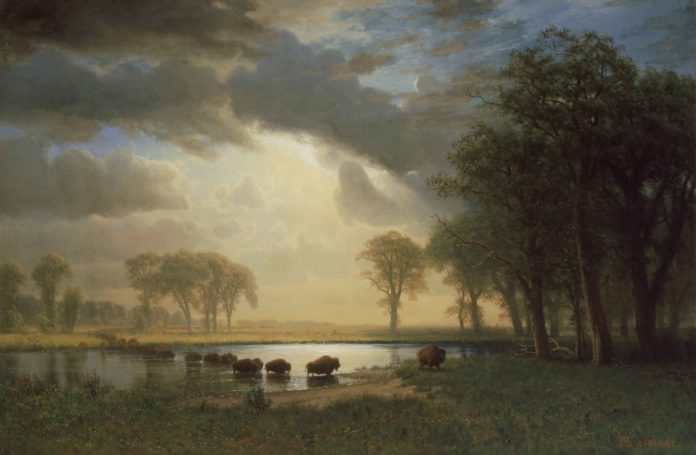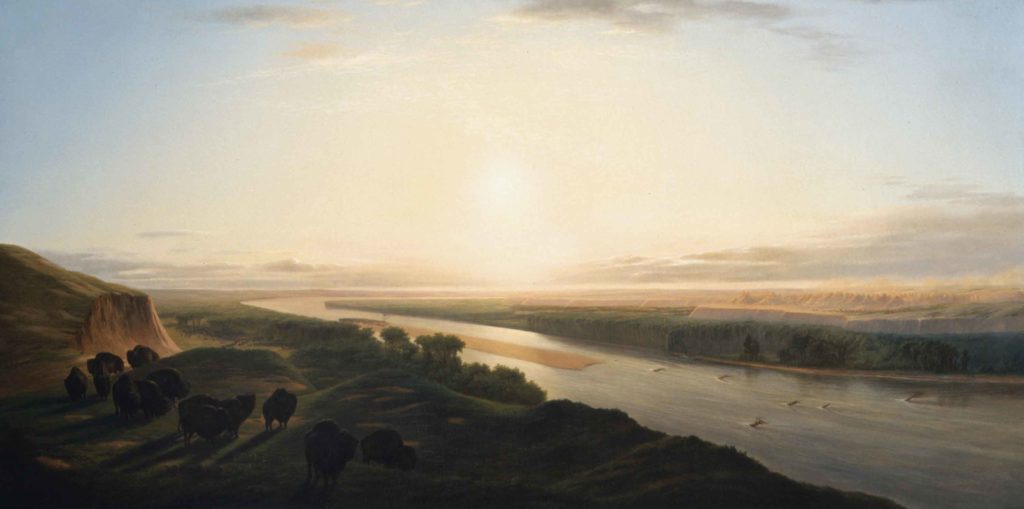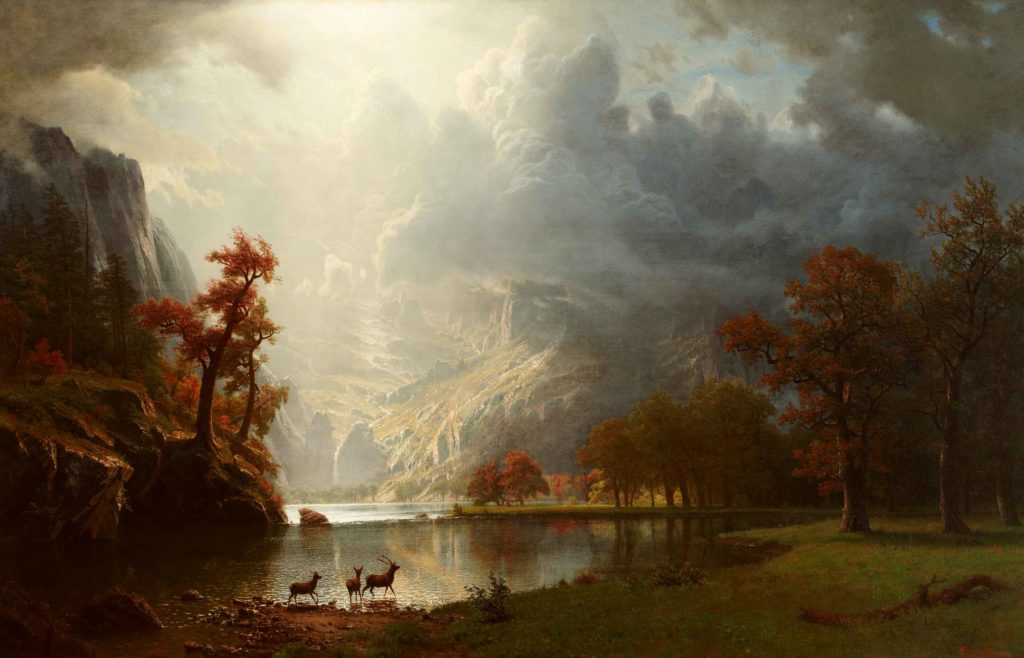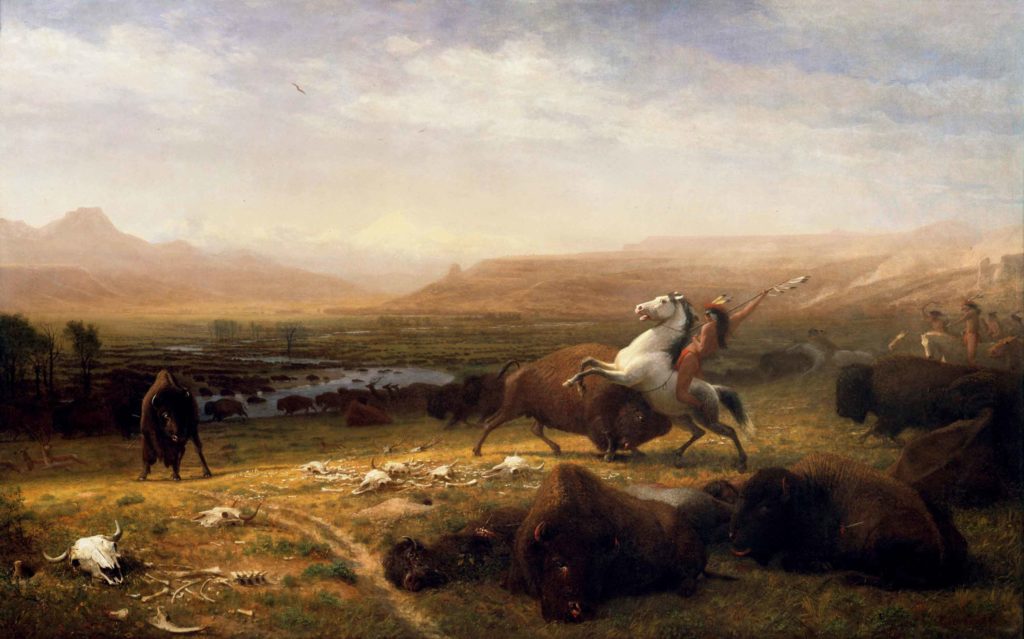
Albert Bierstadt (1830–1902) is typically noted for his sweeping landscapes. In “Witness to a Changing West,” he is celebrated as a painter of western wildlife and indigenous peoples. Through his art, actions, and affiliations, Bierstadt participated in debates about the decimation of wildlife, land use and development, and the fate of Native Americans in the West. “Albert Bierstadt: Witness to a Changing West” is on view at the Whitney Western Art Museum (Buffalo Bill Center of the West, Cody, Wyoming) through September 30, 2018.

From the museum (written by Nancy McClure):
The Buffalo Bill Center of the West and Gilcrease Museum have partnered to present a groundbreaking exhibition titled “Albert Bierstadt: Witness to a Changing West.” Bierstadt (1830–1902) is best known as America’s premier western landscape artist. He was also a renowned history painter, a rarely discussed element of his legacy. This major exhibition addresses Bierstadt in context of his treatment not just of majestic mountains and lakes but more prominently of bison and American Indians, whom he approached as key subjects for his art.

Bierstadt’s history paintings conveyed moral messages as he strove to preserve the dignity of Native people like the Sioux and Shoshone, reveal the tragic slaughter of the American bison, and inspire empathy for the remnant herds of buffalo in Yellowstone National Park as the species neared extinction.

The painter’s masterwork, “The Last of the Buffalo” (above; ca. 1888), stands as a powerful example of the national and international impact of Bierstadt’s art for Euro-American and Native people alike in the late nineteenth century. This and other selected works demonstrate the ways in which Bierstadt engaged with environmental and aesthetic issues of his time, and employed the subjects of Plains Indians and bison as iconic symbols of western America’s changing face.

After its run at the Buffalo Bill Center of the West, “Albert Bierstadt: Witness to a Changing West” travels to Gilcrease Museum (Tulsa, Oklahoma), where it opens November 3, 2018, and runs through February 10, 2019.
Sign up to receive Fine Art Today, the free weekly e-newsletter from
Fine Art Connoisseur magazine.







